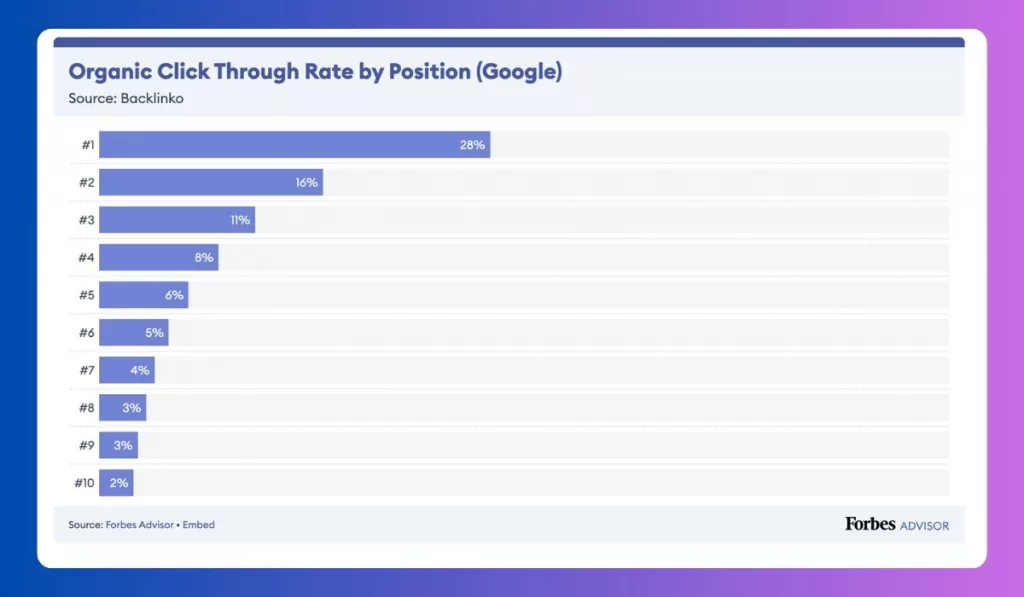Search engine optimization has been crucial ever since search engines became the go-to option for online searches. It ensures a consistent flow of quality traffic to your online channels, whether it’s a website, blog, or other platforms, thereby boosting their online visibility. This enables your pages to surface at the top of every keyword-specific search, enhancing their chances of being discovered by the right audience.
In recent years, on-page SEO algorithms have undergone significant changes. Therefore, understanding these changes and their impact on website rankings and your business is essential. This will help you outpace the competition and maintain visibility in front of your target audience.
So, no matter if you are a small business owner or you have an established business, this post will help you understand the different aspects of on-page SEO.
So, let’s dive right in!
What Exactly On-Page SEO Is?
On-page SEO involves optimizing web page content for search engines and users. Common on-page SEO practices include optimizing title tags, content, internal links, and URLs.
It’s the foundation of your SEO strategy, ensuring that your website is comprehensible for both search engines and human visitors.
Why On-Page SEO Matters
Imagine your website as a book. If it lacked a proper title or table of contents, readers would be lost. Similarly, search engines need to understand your website’s structure and content to rank it well. On-page SEO makes this task easier, enhancing your site’s visibility.
It’s wise to check your on page seo to ensure your site is on the right track. This step can reveal how well your site is optimized and where you can make improvements, leading to better visibility and rankings.

In fact, you can use tools to do this analysis. The only thing is to be sure that the tool is fully reliable and authentic. For instance, Serpple performs content audits, basic SEO audits, and page audits that lead to achieving optimal traffic results.
And for on-page SEO, these audits are highly required. Also, make sure you know the significant factors impacting your on-page SEO.
Also read: Why Does Technical SEO Matter to Your Business?
Key Elements of On-Page SEO
Before we proceed, remember that on-page SEO isn’t just a one-time task. It’s an ongoing process that requires regular updates and optimizations. Let’s break down the crucial elements:
1. Title Tags and Meta Descriptions
Your title tag and meta description are the first impressions you make on search engine users. They should be compelling, include your main keywords, and encourage clicks.
2. High-Quality Content
Content is king in the SEO world. Your website needs to offer valuable, relevant, and high-quality content that addresses your audience’s needs and questions.
3. Optimize Your Headings
Headings help organize your content, making it easier for readers to navigate and for search engines to understand the structure of your website.
4. Internal Linking
Internal links connect your content and give search engines an idea of the structure of your website. They can help spread link equity and increase the ranking potential of your pages.
When asked about the “biggest shifts” and industry changes in SEO, 18.7% of respondents said machine learning and artificial intelligence while 18% said Google updates. Since SEO is ever-evolving, it’s important to stay up to date on the latest changes so you can adjust your strategy accordingly.
Source: Forbes
Advanced Techniques to Boost On-Page SEO
To further refine your on-page SEO, consider these advanced strategies:
- Keyword Optimization: Select and use relevant keywords naturally throughout your content, including long-tail keywords that can attract more specific search queries.
- Speed Optimization: Page speed is a ranking factor. Optimize your site’s loading time by compressing images, leveraging browser caching, and minimizing redirects.
- Image Optimization: Ensure your images are compressed for quick loading times and use descriptive filenames and alt tags.
- Mobile Optimization: With more searches happening on mobile devices, your site must be responsive and mobile-friendly.
You may like reading How to Choose the Best SEO Outsourcing Company for Your Company
Common Pitfalls to Avoid
Avoiding common on-page SEO mistakes is just as important as implementing the right strategies. Here are some pitfalls to watch out for:
Over-Optimization: Using too many keywords can lead to keyword stuffing, making your content difficult to read and potentially penalizing your site.
Ignoring User Experience: SEO isn’t just about pleasing search engines. A site that’s hard to navigate can frustrate users and increase bounce rates.
Neglecting Content Quality: Never compromise on content quality for SEO. Engaging, informative content is what keeps users coming back.
You may also like to read Mobile SEO: How To Optimize Your Website for Mobile Devices
To Wrap Things Up
Mastering on-page SEO is an essential step toward enhancing your website’s visibility and ranking. You need to focus on the core elements of on-page optimization. Additionally, using advanced techniques and avoiding common mistakes allows you to create a website that not only ranks well but also provides value to your visitors. Remember, SEO is a marathon, not a sprint. Regularly updating and optimizing your website will keep you ahead in the game and ensure your site remains visible and relevant to your target audience. Start today, and watch your rankings climb.










Leave a Reply